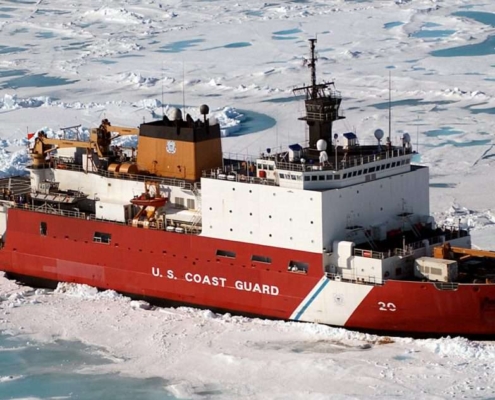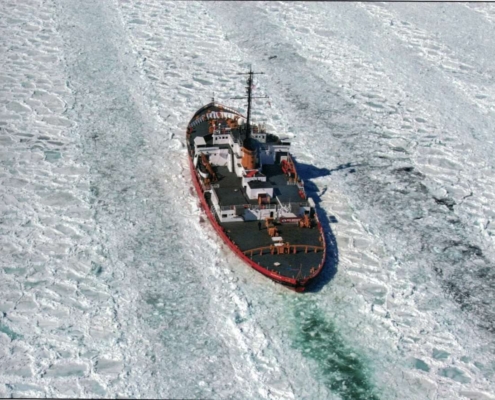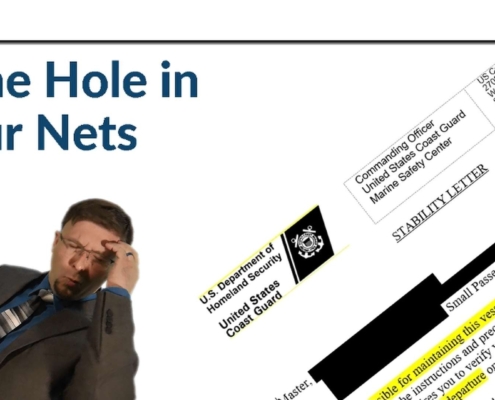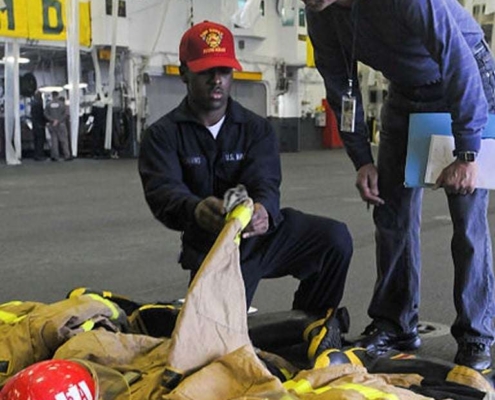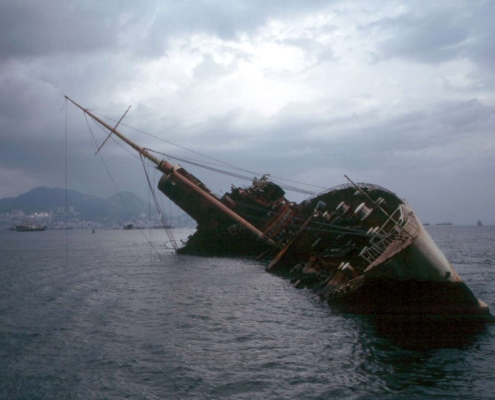We don’t make things easy with the nomenclature. Each naval architect uses a slightly different variation on a similar set of words to describe the various steps in a stability test. So the best place to start is with some vocabulary.
Light ship: A vessel in the light ship condition is a vessel complete in all respects, but without any deadweight items or liquids onboard except machinery fluids.
Deadweight survey: Taking an audit of all items to be added, removed, or relocated on the vessel at the time of the stability test so that observed condition of the vessel can be adjusted to the light ship condition.
Tank survey: Taking soundings of every liquid tank onboard the vessel to determine the exact amount of liquid in each tank.
Freeboard readings: Measuring the freeboard at several points along the vessel length (port and starboard sides) to precisely determine the vessel’s draft and trim at the time of the test.
Lightweight survey: A combination of a deadweight survey, tank survey, and freeboard readings to determine the weight, longitudinal center of gravity (LCG), and transverse center of gravity (TCG) for the vessel light ship.
Incline experiment: Moving a series of known weights in the transverse direction and then measuring the resulting change in equilibrium heel angle to determine the vertical center of gravity (VCG).
Stability test: A generic term to refer any combination of the above tasks. Most commonly used to describe a combination of a deadweight survey, tank survey, freeboard readings, and incline experiment to determine the weight, LCG, TCG, and VCG of the vessel in the light ship condition.


